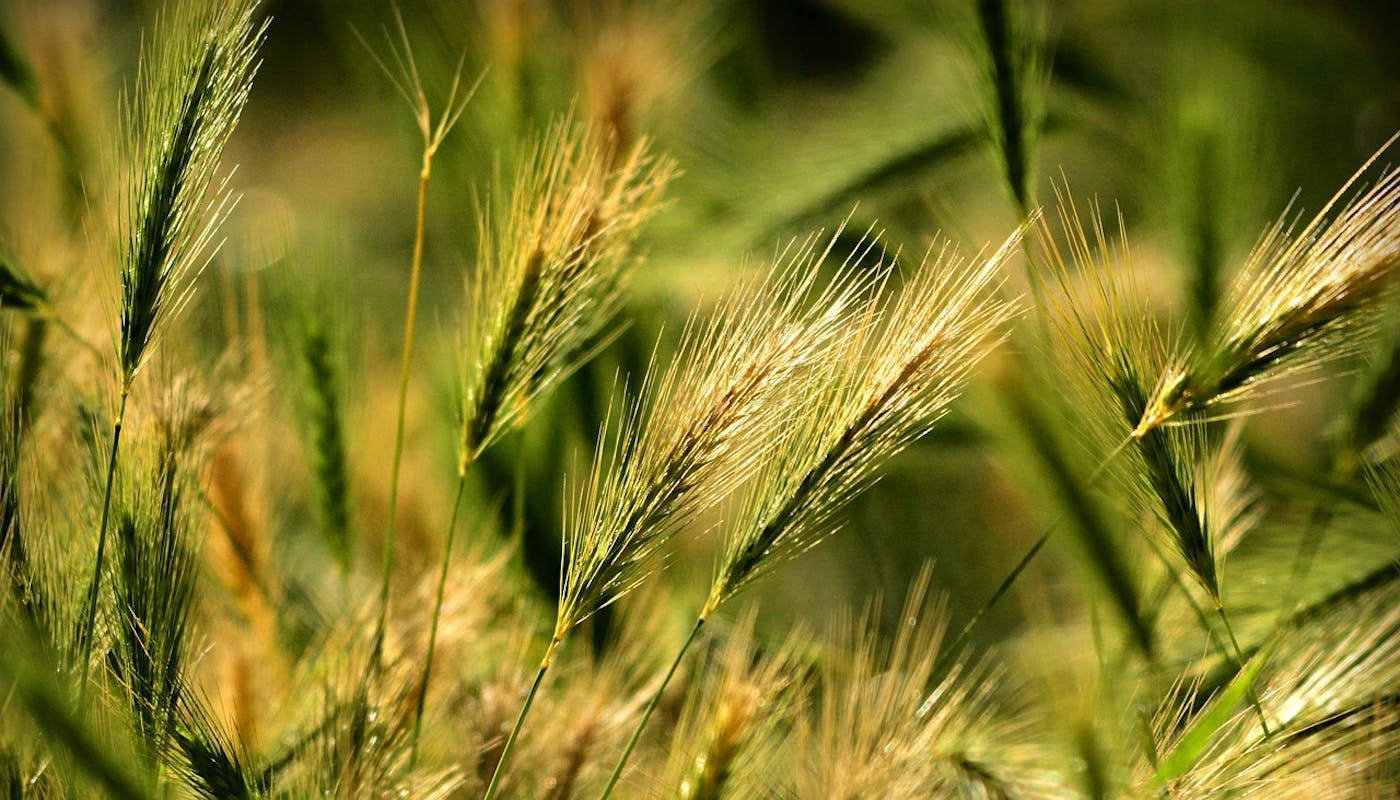What Are Foxtails, and How Do I Protect My Dog From Them?
Foxtail grass looks beautiful blowing in the breeze. But its seeds can become embedded in your dog’s skin, nose or throat, causing very serious medical problems – there are even cases which have been fatal.
Beware the Hidden Danger Lurking in Summer Grass…
Foxtail is an annual grass which bears luxurious seed-heads in full summer and starts to drop its seeds late in the season. It’s found among long grass on trails, in parks, flatlands, and meadows throughout North America.
You’ll recognize foxtail grass (also known as cheat or June grass) by its voluminous seedheads, each one resembling a little fox tail.
Each head is made up of clusters called ‘spikelets’. Each of those consists of a seed with several arms (awns) attached to it, and these awns are barbed. They are designed to stick to the ground or dig into the skin of a passing animal. This technique enables the grass to spread and prosper, but it can be dangerous for the animal who is unknowingly transporting it.
What Happens if Your Dog Has a Foxtail Seed?
Foxtail seeds are designed to burrow in, which is what causes problems for dogs.
They can become lodged in your dog’s paws, skin, eyes, nose, inner ears, or throat. Because they are barbed, these seeds will continue to travel. They’re not biodegradable, so they won’t break down inside your dog’s body. They can reach organs (like lungs or stomach) and cause serious infection.
How to Tell if Your Dog Has a Foxtail Seed
If they’ve been through an area of long grass during summer and early fall, check your dog at home. If you find a Foxtail grass seed in their fur and it hasn’t entered the skin, you can remove it: a tick hook works well on tricky seeds.
Later, keep watch over your dog for signs of irritation. The first signs that they’ve been affected by a Foxtail seed include:
- Sneezing
- Itching
- Pawing at their faces
- Rubbing their heads
- Chewing paws
- Bleeding (if a seed has been lodged inside their nose).
If you do find a seed lodged in the skin, you should take your dog to the vet for proper removal. Trying to remove it yourself can cause a breakage with leftovers which continue traveling into the skin.
The site where a seed has burrowed into the skin will become inflamed or swollen. If left to travel inwards, the seed can cause infection which can cause loss of appetite, moping, restlessness, and discomfort for your dog. As always, if your dog develops any unusual behaviors, you should book a visit to the vet.
Reducing the Risk of Foxtails in Summer
There are some simple steps you can take to reduce your dog’s risk of picking up a Foxtail seed:
- First and most obvious: avoid places where you have seen Foxtail grass, choosing a different location for your dog’s walk.
- Trim longer fur before midsummer.
- Brush your dog, and check their paws carefully, after exposure to long grasses.
- If your dog is regularly exposed to long grass where Foxtails grow, you can buy products such as seed-combs, face guards, and bodysuits to protect them.
- Of course, if you find Foxtail grass in your yard, pull it up or spray with weedkiller (or vinegar as a natural substitute).
Further Reading
What other hazards should you be aware of during the summer? Learn about dangers for dogs on the beach/learn/dog-health/read-this-before-you-take-your-dog-to-the-beach and the threat of blue-green algae in ponds and lakes./learn/dog-health/how-can-i-keep-my-dog-safe-from-blue-green-algae Sneezing after walks could be a sign that your dog has a seasonal allergy/learn/dog-training/can-dogs-have-seasonal-allergies. It’s also wise to be vigilant about high temperatures during the summer months./learn/dog-training/how-hot-is-too-hot-for-my-dog
